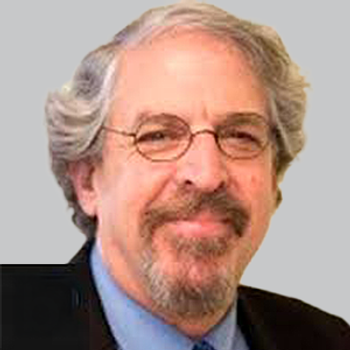
A Turning Point for Pediatric Epilepsy
M. Scott Perry, MD, spoke about the industry's excitement surrounding the current treatment landscape for pediatric epilepsy.
M. Scott Perry, MD
The significant progress in pediatric epilepsy in recent years holds promise for the future, sparking the development of novel treatments that may prevent or alter the disease course. The pace of recent advances has been explosive, and throughout the last 20 years advances in genetics, electrophysiology and neuroimaging have greatly improved the ability to differentiate, diagnose and treat pediatric patients with epilepsy.
M. Scott Perry, MD, Medical Director of Neurology and Co-Director of the Jane and John Justin Neurosciences Center at Cook Children’s, considers this to be exciting time in the space because the industry finally has become interested in pediatric epilepsy and now pharmaceutical trials are conducted specifically in pediatric patients.
Perry added that aside from pharmaceutical therapeutics, individuals are recognizing the value and have a far better understanding of epilepsy surgery especially as there are now far more minimally invasive approaches.
To provide more insight into the current treatment landscape of epilepsy, and to discuss the need for biomarkers, Perry spoke with NeurologyLive in an interview.
NeurologyLive: Can you discuss the current therapeutic landscape?
M. Scott Perry, MD: I think the current landscape is pretty exciting because finally, industry has become interested in pediatric epilepsy to some degree. In the past, every pharmaceutical trial that was out there was a me-too trial that was already done in adults and basically, they were just trying to replicate it in kids, but now trials are beginning with kids.
Specifically, for some of these rare syndromes that we deal with in pediatrics, for example, Dravet syndrome which I do a lot of, has already had multiple clinical trials specific to that syndrome, which is pretty exciting. There are a couple other rare genetic epilepsies that now have trials specific to them. That’s probably one of the more exciting things in pediatric therapeutics.
I think along that same line there’s increasing interest in gene therapies, taking from Duchenne muscular dystrophy and spinal muscular atrophy where they’re creating ways to help regulate proteins and help improve the quality of life in those diseases and they’re now looking at the same for some for genetic epilepsies, so those are exciting things coming up.
Beyond pharmaceutical therapeutics, I think there is a lot of excitement in the epilepsy surgery realm because increasingly, people are recognizing the value of epilepsy surgery and recognizing that children, even very young children, can be candidates and be cured of their epilepsy with surgery. The fact that we’re getting increasingly more minimally invasive approaches to doing it, makes it even more of a favorable treatment option for patients and for providers too, who are otherwise scared of some of the potential adverse effects of very invasive procedures, now these minimally invasive approaches like thermal ablation are gaining interest.
Can you talk about CBD as a treatment option for other forms of epilepsy?
M. SP: Most drugs that we do trials on in kids often get indications in Lennox-Gastaut Syndrome just because it’s an easy syndrome to do research in, children have a lot of seizures and they have somewhat uniform presentation, allowing researchers to conduct studies fairly quickly and show efficacy. It’s always the case that over time, the drug will be used for multiple other seizure indications because the seizures of Lennox- Gastaut Syndrome are the same kinds of seizures that multiple other epilepsies have, so it makes sense to use the medication for other indications.
I think Epidiolex is a nice addition to the collection of drugs we have. As far as we know it’s a new mechanism of action, we’re not exactly sure how it works yet, but a new mechanism of action compared to the other drugs. As a whole, it probably has better tolerability profiles than some of the other drugs, but it’s not completely without side effects. And it works, I mean it’s not the most amazing drug in the world, not everyone is going to be seizure free on it, but it does reduce seizures.
It’s a nice step, but I think it’s just the first step because the cannabis plant has so many different substances in it, so many phytocannabinoids to look at besides CBD. There are potentially multiple other drugs within the plant that we’ll find over time that are potentially even more efficacious than the CBD itself.
What specific biomarkers are needed?
M. SP: I think we still need biomarkers to be able to predict severity of seizures and we’re getting that in some.
For instance, tuberous sclerosis, which is a syndrome that we know 90% of people with tuberous sclerosis will develop epilepsy. Researchers have looked to try and determine what are predictors for who is going to develop epilepsy and then is there anything we can do ahead of time to prevent it. Some early studies from some of that work have shown that if we know a person is at high-risk before they ever develop their infantile spasms with tuberous sclerosis and we treat them with vigabatrin, the end outcomes can be much better as far as the cognitive outcome etc.
This should be extrapolated to other things; so how can we predict kids that are at risk of epilepsy, maybe because we know they’re born with a certain genetic condition or they’re born with a malformation in the brain, or they had a hypoxic injury at birth, what are markers we can use to know who is going to develop seizures and then is there something we can do to alter that course.
Transcript edited for clarity.
Newsletter
Keep your finger on the pulse of neurology—subscribe to NeurologyLive for expert interviews, new data, and breakthrough treatment updates.


































